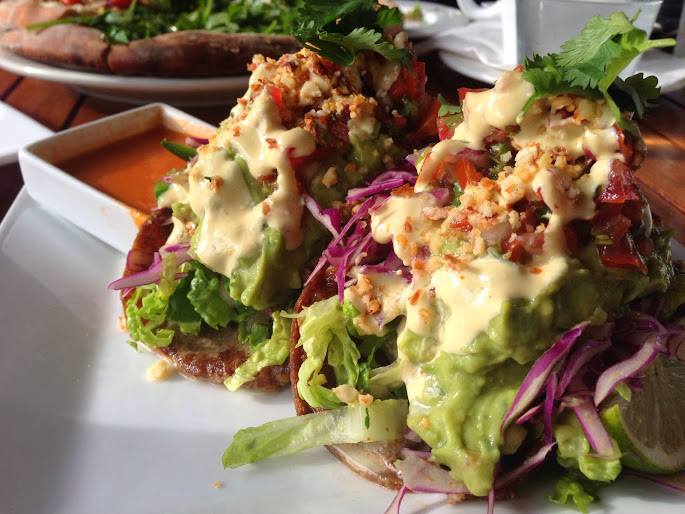Lifestyle Tips to Help Increase Nutrition Absorption:
The way in which the human body digests and absorbs nutrients is incredibly complex. It involves many different functions and organs to work cohesively, as well as help from enzymes, saliva, acid, bile, and even your own blood. So, why not do all you can to help this complex system out? While food plays an important part in the absorption process, lifestyle changes can also help increase the absorption of nutrition!
Eat Slower

StockSnap/Pixabay
Slow it down! The first step in the digestion process is chewing. The act of chewing food actually releases enzymes that are a crucial part of digestion. Purdue University published a study showing that “when people chewed almonds 40 times, they absorbed more healthy fat than when they chewed them just 10 times, making nutrients like vitamin E more accessible.”
Reduce Stress

ivanovgood/Pixabay
Have you ever noticed that when you get stressed out, you also sometimes experience unpleasant bowel symptoms as well? This is due to the fact that your body conserves energy from digestion to give you some help in dealing with the stress. Prioritize self-care! Focus on decreasing your anxiety and stress before meals, give yourself the appropriate space and time to cook meals, and make sure you sit down when you’re eating.
Boost Gut Health

qimono/Pixabay
We return to the gut! Your gut is one of the primary nutrient absorption centers in the body, therefore it makes sense that you should care diligently to keep those bacteria happy, healthy, and plentiful. Per the journal Nutrition in Clinical Practice, “up to 30 percent of the protein and carbs you eat reach your colon undigested, where your gut bacteria break them down.” Increase gut health by consuming bacteria-loving food items, such as veggies high in dietary fiber and fermented foods, or you can even try a probiotic supplement, such as this organic, non-GMO, and vegan Ora Organic Probiotic Capsules.
Foods that Aid in Nutrition Absorption
Miso Braised Carrots and Leeks with Cilantro Cardamom Basmati/One Green Planet
Lifestyle changes are a great place to start, yet the core of nutrition absorption starts with the food you eat. For those of us unable to regularly shop at farmer’s markets or grow our own soil-controlled veggies, it’s important to focus on the right vegetable pairings. While raw and fresh food items purchased from the grocery store may not be as nutritious as they used to be, when some vegetables are paired together they work cohesively to up the absorption of nutrition into your body.
Iron and Vitamin C
Parsley and Pepita Falafel Salad/One Green Planet
Absorbing plant-based iron can be a grueling task for the human body. Therefore, pair your iron-rich foods, such as spinach, with a veggie that is high in vitamin C, such as acerola cherries, chili peppers, sweet yellow peppers, or herbs such as parsley and thyme. Vitamin C has been shown to amplify the absorption power of many nutrients, including iron. Try out a few of these mix-and-match recipes that pair iron-rich plant-based foods with iron-absorbing, Vitamin C-rich, plant-based foods: Herb and Lentil Stuffing, Parsley and Pepita Falafel Salad, or this Quinoa Stuffed Bell Pepper.
Fat-Soluble Vitamins and Fatty Acids
Artichoke and Walnut Pesto Pie/One Green Planet
You’ve probably heard the term fat-soluble, which refers to vitamins (such as A, D, K, and E) that require fatty acids in order to be absorbed into the body. Therefore, when eating a vegetable-rich meal (most veggies have one or more of these vitamins), try pairing it with healthy, plant-based fats which can be found most prevalently in nuts, seeds, and avocados, such as this Artichoke and Walnut Pesto Pie or these Falafel Wraps with Avocado Salsa.
Try a Smoothie
Goji Berry and Ginger Smoothie/One Green Planet
While consuming both juice and smoothie concoctions on a regular basis can quickly spiral out of control — increasing unnecessary sugar consumption — consuming fruit in this form may help the body absorb fruit-based nutrients more readily. Per Ralf Schweiggert, based out of the University of Hohenheim, “the fiber in whole fruit may bind to certain micronutrients, keeping them from being absorbed in the small intestine.” While moderation is key, making smoothies can be fun, easy, and delicious, such as these plant-based smoothie recipes: Blue Banana Smoothie, Goji Beery and Ginger Smoothie, Memory Booster Chunky Monkey Shake, or this High-Protein Vanilla and Cashew Smoothie.
Looking to get the most out of your plant-based nutrients? We highly recommend downloading our Food Monster App, which is available for both Android and iPhone, and can also be found on Instagram and Facebook. The app has more than 10,000 plant-based, allergy-friendly recipes, and subscribers gain access to new recipes every day. Check it out!
— One Green Planet

